It took 93 years for the Academy to name an Asian woman (and first woman of color) as Best Director when Chloé Zhao took home the 2021 Academy Award for the critically acclaimed Nomadland. Before Zhao made history, director Domee Shi became the first woman of color to win a best animated short Oscar for Bao in 2019; the same year, director Isabel Sandoval’s feature Lingua Franca was the first film directed and starring an openly trans woman of color to screen in competition at the Venice International Film Festival. In 2020, Awkwafina became the first Asian woman to win Best Actress at the Golden Globes for The Farewell, directed by Lulu Wang. And this year, Michelle Yeoh made Oscar history as the first Asian woman to win Best Actress for Everything Everywhere All at Once.
As representation has expanded in recent years for Asian women on either side of the camera, let’s look at the Asian American women film directors who have paved the way in Hollywood.
![]() - -
The Curse of Quon Gwon
(1916)
(1916)
- -
The Curse of Quon Gwon
(1916)
(1916)

Director and star Marion Wong and costar Violet Wong, 1916 (Photo by Everett)
The first Asian American feature film was made in 1916 by 21-year-old Wong, who directed, wrote, produced, and starred in The Curse of the Quon Gwon: When the Far East Mingles with West. Wong cast herself as the villain, her sister-in-law Violet Wong as the hero, and her mother Chin Shee as the elder matron. The film was produced by The Mandarin Film Company — also founded by Marion Wong, who secured funding from her uncle Ben Lim. According to the July 7, 1917 issue of The Motion Picture World, the film “deals with the curse of a Chinese god that follows his people because of the Influence of western civilization.” When the film was released, Marion Wong told the Oakland Tribune, “I had never seen any Chinese movies, so I decided to introduce them to the world.”
Unfortunately, no distributors bought the film and, with no financial returns, Ben Lim declared bankruptcy. Marion Wong made no other films that we know of, and today, only two out of seven or eight nitrate reels of The Curse have survived, discovered in 2004 by filmmaker Arthur Dong. In 2006, The Curse was inducted into the United States Library of Congress’ National Film Registry.
My China Film (1936)
Wong achieved many firsts. She was the first Chinese American movie star in Hollywood, appearing in over 60 films, with her first leading role coming in 1922’s The Toll of the Sea. In 1951, she became the first Asian American to lead an American television show, The Gallery of Madame Liu-Tsong. In 1960, a year before she died, Wong received a star on the Hollywood Walk of Fame. In 2022, Wong became the first Asian woman to appear as the face of the U.S. quarter dollar; in May of the following year, Barbie unveiled the Anna May Wong doll for AAPI Heritage Month.
Not only a trailblazing actor, Wong was also a filmmaker. In 1936, she directed and produced the documentary-like My China Film, which documents Wong’s one and only trip to China, with shots of her being fitted by a Shanghai tailor for cheongsams and viewing her ancestral village with her father. Made immediately after she was rejected for a leading role in the MGM film The Good Earth, My China Film is Wong showing the world what China looks like from a Chinese American perspective rather than through Hollywood’s exoticized lens. Roughly two decades later, on February 14, 1957, the film aired as an episode of the ABC television program Bold Journey.
![]() - -
Who Killed Vincent Chin?
(1988)
(1987)
- -
Who Killed Vincent Chin?
(1988)
(1987)
Choy and Tajima-Peña directed the Oscar-nominated feature documentary about the 1982 murder of Vincent Chin, a young Chinese American engineer, by autoworker Ronald Ebens. Although Ebens confessed, he never spent a day in prison. This crime happened during the economic downturn of the U.S. auto industry and trade war between Japan and the United States, which led to an increase in anti-Asian racism. By documenting the crime from eyewitness accounts and observing its impact on the families of those involved, the U.S. justice system, and the Asian American community, Choy and Tajima-Peña made one of the most seminal Asian American films to date. Who Killed Vincent Chin? tells the world about the injustice of Chin’s murder, but also the resiliency of his family and community to spark the modern Asian American civil rights movement. In 2021, Who Killed Vincent Chin? was inducted into the National Film Registry of the Library of Congress.
![]() 92%
Mississippi Masala
(1991)
(1991)
92%
Mississippi Masala
(1991)
(1991)
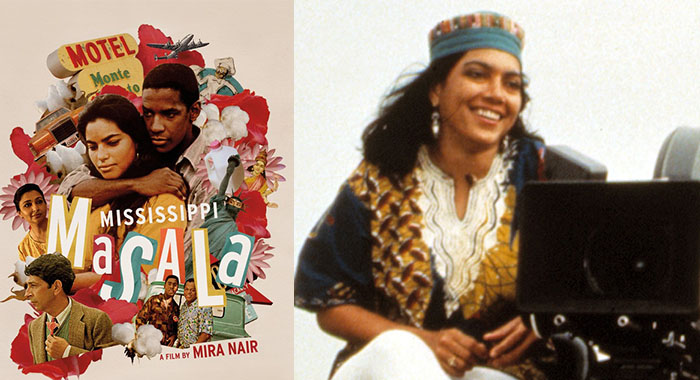
Mira Nair directing Mississippi Masala c. 1991 (Photo by Everett)
Director Nair — whose first film, Salaam Bombay!, was nominated for an Academy Award for best foreign film — followed it by setting out to make a complex romantic dramedy set in Greenwood, Mississippi. The result is Mississippi Masala, a love story between a young Indian American motel worker from Uganda (played by Sarita Choudhury) and a Black American carpet cleaner (played by Denzel Washington). The film was inspired by the time Nair spent at Harvard, where she had access “to both white and Black communities — a third-world sister to the Black community.” Exploring the “interesting hierarchy where brown was between black and white,” Nair artfully tackled issues of racism, colorism, culture clash, and displacement through a reimagined tale of star-crossed lovers.
“Stories of interracial love are still rarely told onscreen, and these relationships — the masala mixes — are still not visible enough to become as normalized as they deserve to be.” –Bilal Qureshi, Criterion
![]() 87%
Girlfight
(2000)
(2000)
87%
Girlfight
(2000)
(2000)
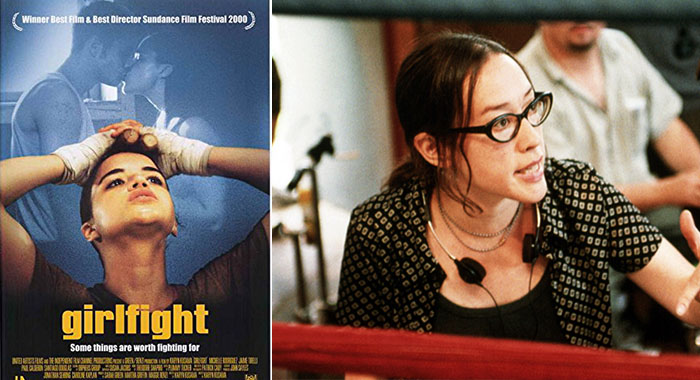
Karyn Kusama directing Girlfight c. 2000 (Photo by Everett)
Kusama’s debut film centers a young Latina in a raw coming-of-age story that defies societal norms. Played by untrained and then-unknown Michelle Rodriguez, protagonist Diana Guzman is a street fighter who takes her anger into the boxing ring against her father’s wishes. When Kusama was trying to get the film financed, she kept hearing “Does she have to be Latina?” but she stuck to her original plan. “I was never going to make much money on the movie, really at any budget,” she told BuzzFeed. “It just didn’t feel worth it to give away something so personal to me to accommodate somebody else’s deep fears.” And her vision paid off: Girlfight tied for the Grand Jury Prize at the 2000 Sundance Film Festival, where Kusama was also honored with the best directing award.
“Girlfight gets everything right: Its gritty bleak setting of a largely Hispanic Brooklyn neighborhood; the peeling walls and grimy atmosphere of the boxing gym… her bond with her sweet-natured brother and her combative relationship with her [father].” –Rene Rodriguez, Miami Herald
![]() 88%
Saving Face
(2004)
(2004)
88%
Saving Face
(2004)
(2004)
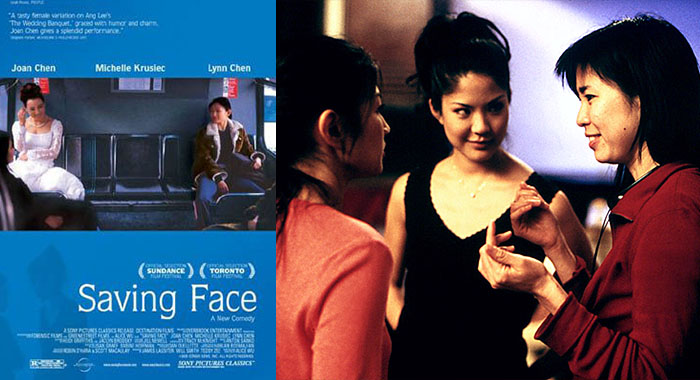
Director Alice Wu on set of ‘Saving Face,’ with Michelle Krusiec & Lynn Chen, c. 2005 (Photo by Sony Pictures Classics/courtesy Everett Collection)
Writer/director Wu’s landmark film was the first Hollywood movie with a Chinese American cast since 1993’s Joy Luck Club. A romantic dramedy about closeted young surgeon Wil (played by Michelle Krusiec) and her unwed pregnant immigrant mother Hwei-Lan (played by Joan Chen), Saving Face was ahead of its time in focusing on an Asian American lesbian. The love story isn’t just between Wil and Vivian (played by Lynn Chen), but also between Wil and Hwei-Lan, who grow closer and develop a mutual understanding by the end of the film. Even though there were far fewer directors telling Asian American stories in Hollywood when Wu released Saving Face, she never felt limited. “I’m an Asian lesbian. I’m an immigrant,” she told the Associated Press. “I feel like they’re as American as anything else.” Sixteen years later, when she released her second film, The Half of It — also centered on a Chinese American lesbian character — she observed, “The good thing is now people seem more open to it.”
“Wu was determined to write a happy ending — a narrative that did not default to tragedy or misfortune. And that’s befitting for a mother-daughter story. Why do rom-coms always get happy endings, and not family dramas? With Saving Face, Wu dares to ask: “Why not both?” –Terry Nguyen, Vox
![]() 95%
The Grace Lee Project
(2005)
(2005)
95%
The Grace Lee Project
(2005)
(2005)
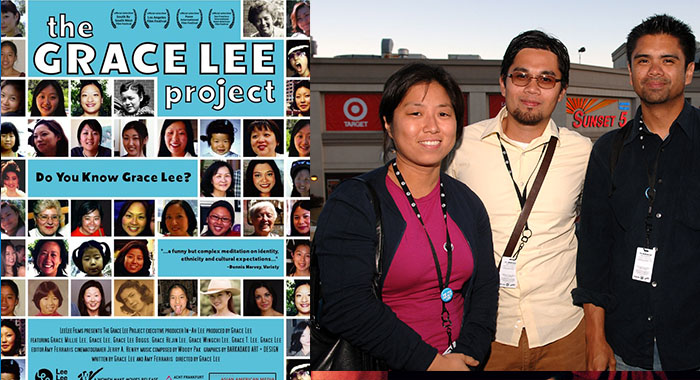
Grace Lee, director, The Grace Lee Project, Ian Gamazon, co-director, Neill Delallana, co-director (Photo by John Sciulli/WireImage)
Documentary filmmaker Lee grew up in Missouri, where she was the only Grace Lee she knew. When she became an adult, she met many more in New York and then California — and with them, racist and sexist stereotypes of Asian American women as demure and studious. She then set out to make a documentary film about a number of Grace Lees who break the mold, including “the fiery social activist Grace Lee Boggs, the rebel Grace Lee who tried to burn down her high school, and the Silicon Valley teenager Grace Lee who spends evenings doing homework, playing piano, and painting graphic pictures of death and destruction.” Through each of the stories, audiences are entertained while being made aware of the complexity of Asian American female experiences.
“A breezy first-person video essay that goes in search of the average Asian American woman, all the while wondering if there is in fact such a thing.” –Dennis Lim, Village Voice
![]() 87%
In Between Days
(2006)
(2006)
87%
In Between Days
(2006)
(2006)

Director So Yong Kim during the 2006 Los Angeles Film Festival (Photo by Rebecca Sapp/WireImage)
The debut film from Korean American director So Young Kim, tells a coming-of-age story about Aimie (played by Jiseon Kim), a teenager who’s recently immigrated from South Korea to a city in North America with her single mother (played by Bokja Kim). As the film progresses, Aimie develops romantic feelings for her best and only friend Tran (played by Taegu Andy Kang), who is more assimilated than she is. Speaking with Talkhouse, Kim said she “just wanted to tell a story about this teenage girl who’s kind of in between two worlds.” Aimie teeters between her old life in South Korea and her new life in America, and between girlhood and adulthood. Kim won a Special Jury Prize for Independent Vision at the Sundance Film Festival, where In Between Days premiered.
“A quiet specimen of personal storytelling at its most exciting, this beautiful feature debut from So Yong Kim gets into the head of Aimie (Jiseon Kim), a young Korean woman in a snow-clogged, unnamed North American city.” –Lisa Schwarzbaum, Entertainment Weekly
![]() 82%
Kung Fu Panda 2
(2011)
(2011)
82%
Kung Fu Panda 2
(2011)
(2011)
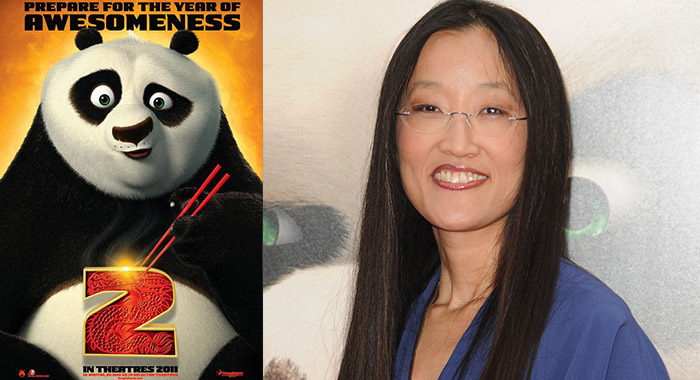
Jennifer Yuh Nelson at the Kung Fu Panda 2 premiere (Photo by Dee Cercone/Everett Collection)
When she made her directorial debut with Kung Fu Panda 2, Nelson made history as the first woman to solo-direct a major Hollywood animated feature film. When it was nominated for an Academy Award for best animated feature, Nelson became the first Asian American woman (and only the second woman overall) to ever receive such a nomination. The film is about lovable panda Po (voiced by Jack Black) going on an adventure with friends like Monkey (voiced by Jackie Chan), and other supporting characters like Mr. Ping (voiced by James Hong) and Soothsayer (voiced by Michelle Yeoh). The DreamWorks animated film grossed $665.7 million worldwide.
“‘Kung Fu Panda 2’ is exactly as you’d expect, and more. The animation is elegant, the story is much more involving than in the original, and there’s boundless energy.” –Roger Ebert, Chicago Sun-Times
![]() 87%
Meet the Patels
(2014)
(2014)
87%
Meet the Patels
(2014)
(2014)
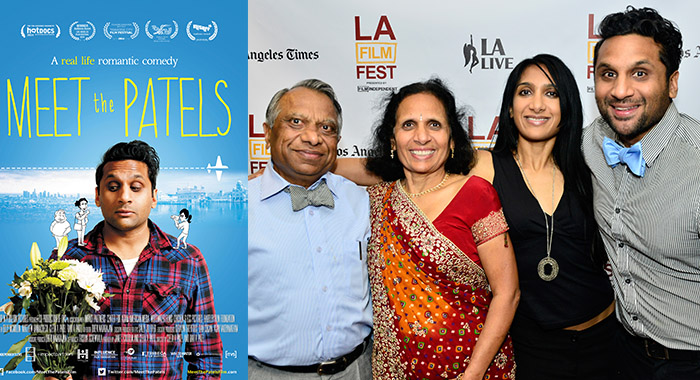
Vasant Patel, Champa Patel and writers/directors Geeta Patel and Ravi Patel at the ‘Meet the Patels’ premiere (Photo by Jerod Harris/WireImage)
Patel co-directed Meet the Patels with her brother Ravi, who also stars in the documentary about their parents sending him on arranged dates around the United States via the “Biodating” system. Before Netflix’s popular series Indian Matchmaking, there was Meet the Patels. What began as a home video of a family vacation developed into an award-winning documentary the directors have dubbed a “real-life romantic comedy.” While Geeta stays behind the camera, she often chimes in with playful jabs at Ravi. Speaking with TIME, Patel described the universality of Meet the Patels by saying, “We thought the film was about being Indian, [but] it’s about family and it’s about love. It’s really that simple.” As hilarious as it is heartwarming, it offers a glimpse into one Indian American family’s intergenerational experience of love.
“It turned one man’s culturally specific journey into a lively and engaging universal story made with an unmistakable sense of fun.” –Kenneth Turan, Los Angeles Times
12 more trailblazing women directors of Asian heritage you should know:
Mina Shum, Double Happiness (1994)
Joan Chen, Xiu Xiu: The Sent-Down Girl (1998)
Jennifer Phang, Advantageous (2015)
Sasie Sealy, Lucky Grandma (2019)
Diane Paragas, Yellow Rose (2020)
Cathay Yan, Harley Quinn: Birds of Prey (2020)
Lisa Joy, Reminiscence (2021)
Geeta Malik, India Sweets and Spices (2021)
Kate Tsang, Marvelous and the Black Hole (2021)
Celine Song, Past Lives (2023)
Nida Manzoor, Polite Society (2023)